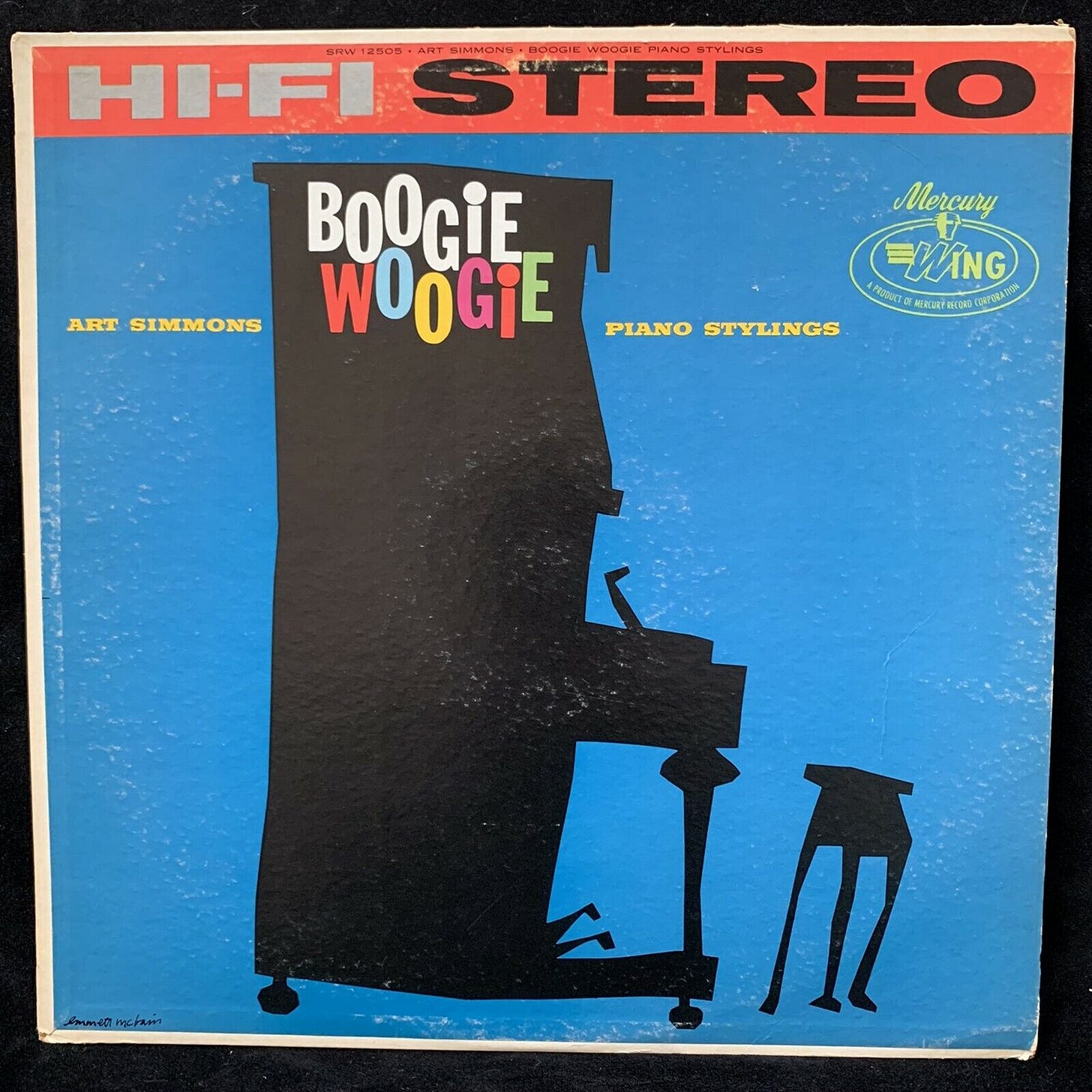TT 501: Pinetop Smith and Avery Parrish: "Pinetop's Boogie Woogie" and "After Hours"
And what about Art Simmons's Boogie Woogie Piano Stylings?
At the end of 1928, Pinetop Smith recorded “Pinetop’s Boogie Woogie,” thus naming the genre. The piano playing is beautiful and the spoken instructions amusing; in short order it was a hit, becoming part of the DNA of American music. The 1938 Tommy Dorsey big band success “Boogie Woogie”—based on “Pinetop’s Boogie Woogie—was a stop on the way to the 40’s boogie woogie craze, which led directly into R’n’B and Rock and Roll.
Avery Parrish recorded “After Hours” in 1940 with the Erskine Hawkins orchestra. This track sounded the starting gun for a certain urban slow blues approach, and for a time they called it “The Black National Anthem.” Like “Pinetop’s Boogie Woogie,” “After Hours” was a key strand of American musical DNA, especially important to Chicago blues of the ‘50s.
Bertha Hope told me: “I remember the first little club I played at, the first thing the owner said to me was, ‘Can you play ‘After Hours?’ Because if you can’t play ‘After Hours,’ you can’t play here.’”
”After Hours” was also recorded by many jazz musicians including Dizzy Gillespie (with Ray Bryant on piano), Phineas Newborn, and Hazel Scott.
There are plenty of idiosyncrasies in the two tracks. Pinetop repeatedly plays E natural on the F7 in bars 5 and 6, an intentionally primitive or “country” effect rarely found in a more urban blues. Parrish plays the last four bars very low in register, something that works particularly well with the compressed sonics of a 78. Pinetop’s groove is effortless, while Parrish’s virtuosity is undeniable.
They are one offs, also because tragedy befell both pianists. Pinetop was killed by accident at a dance shortly after recording his trope-naming hit.

In 1943 Parrish was injured in a bar fight and never played again. He died in severely reduced circumstances at the end of 1959.
Footnote: One of the first LPs I ever listened to was Boogie Woogie Piano Stylings by Art Simmons. My aunt and uncle had a copy, and I transferred it to my parents’s reel-to-reel. I’d stare at the Emmett McBain cover art for hours. (Just today I learned that McBain was black.)
Both “Pinetop’s Boogie Woogie” and “After Hours” are on the Boogie Woogie Piano Stylings set list.
Simmons was a quality American jazz pianist who made this LP in 1959 during a long residency in Paris. It is a dance LP, for there is a second pianist, Maurice Vander (who was respected in France as bebopper), a bassist, and two drummers, one of whom is the legendary Kenny Clarke. Quincy Jones also had something to do with the date.
Just recently Elbert of Our Kilowatt Hours wrote up Boogie Woogie Piano Stylings. Finally I understand who this pianist was! Elbert also includes a download of “Art Simmons in Paris,” a valuable profile by Ursula Davis (the wife of saxophonist Nathan Davis).
Elbert also uploaded the LP to YouTube. It’s a good record. I don’t think Simmons, Vander, Clarke or the other two regarded themselves as R’n’B or blues musicians, but they have no problem delivering the goods. There’s no information given, but I suspect Simmons is playing the treble part, with the brilliant blues licks, and Vander is playing the bass ostinato and light comping.
Pine Top's Boogie
St. Louis Blues Boogie
Foster's Blues
Ham Boogie
Boogie Woogie Prayer
An Answer to My Prayer
Undecided Boogie
After Hours
Deho Boogie
Cow Cow Boogie
Night Train
Art Simmons and Maurice Vander, piano
Kenny Clarke and Baptist Reilles, drums
Emmanuel Soudieux, bass
As a kid, my favorite was “Foster’s Blues.”







As a teen around 1969 I discovered Pinetop Smith and hunted up what I believe are all four of his 78s. He mentions his name on all of them. My guess is he was concerned that the labels might fall off the records, and no one would know who recorded them. My favorite of his tracks was "I'm Sober Now." https://www.youtube.com/watch?v=_G-wlobZ_Hc
Great article! Did Ertegun and Ray Charles lift Mess Around from Pinetop? Sure sounds like it